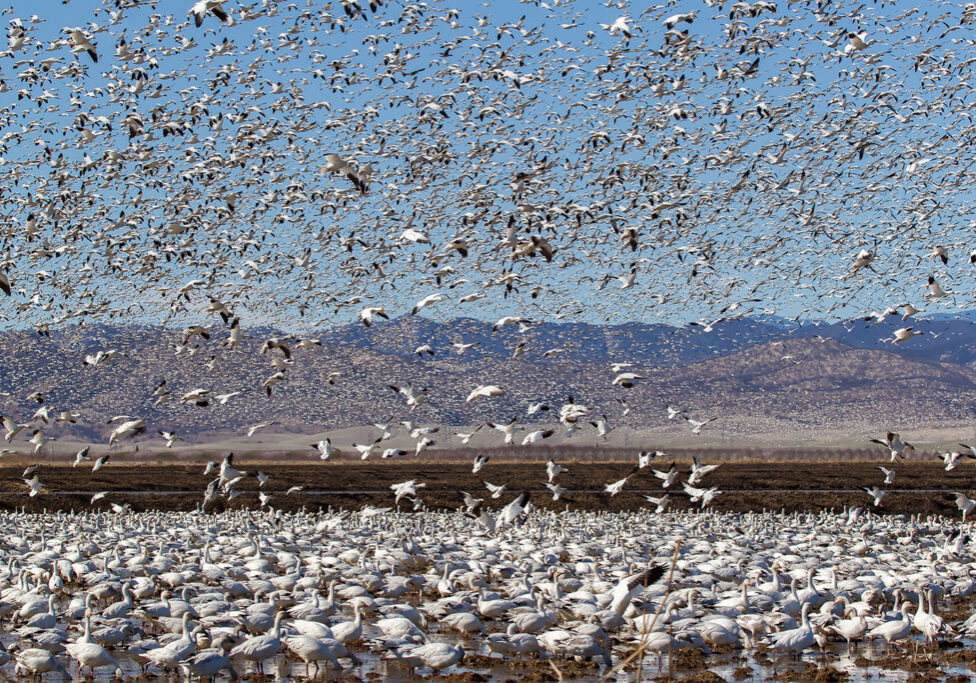WILDLIFE PHOTOGRAPHER: LESLIE MORRIS, WILDLIFE ENTHUSIAST & COMMS. MANAGER FOR CRC: JIM MORRIS
Alone before dawn, one frigid winter morning, wildlife photographer Leslie Morris was setting up her gear in a duck blind in the Sacramento National Wildlife Refuge in Glenn County awaiting the arrival of migrating birds. She was encouraged as the shadowy outlines of birds emerged in front of her in the faint first light of the day. But the birds scattered, evacuating the field when a Peregrine Falcon landed on the roof of the blind.
After an unproductive wait, Leslie was considering packing it in for the day when her mobile phone rang. A farmer familiar with her work had called to tell her that geese were swarming on his rice land in nearby Maxwell. She drove there and was greeted by a gathering of monumental numbers of Snow Geese.
The California Rice Commission and the California Ricelands Waterbird Foundation have made use of dozens of Leslie’s photos, the most riveting among which she photographed that day — a spectacular image she calls “The Epic Grind.”
Leslie is married to Jim Morris, communications manager for the California Rice Commission. Although he is a writer by training, he has a deep appreciation for the ability of wildlife imagery to convey important messages.
Leslie, a member of the North American Nature Photography Association, has become partial to a few favorite species during her years of taking photos.
“I’ve been fascinated with the American Avocet, lovely birds that in the winter are black and white. In the summer when they’re breeding, though, they have a beautiful buff color added to that. The Black Terns that nest in the fields in the summer are the original ‘angry birds.’ If you stand outside of your car, they hover and yell at you,” Leslie chuckled. “Jim and I love American Bitterns, and Sandhill Cranes are among our favorites. They’re very joyous birds that actually play in the rice fields by throwing the rice straw around, which is awesome. Bald Eagles, of course, are phenomenal to see.”
Observing that rice is commercially grown within 15 minutes of the state Capitol, Jim welcomes opportunities not only to tell but also to show how agriculture and wildlife habitat preservation are interrelated and complementary.
“My colleagues and I collectively take every opportunity to tell this important story visually, through videography and still photography,” added Jim, who has become a wildlife photo enthusiast. “Imagery is far more likely than a long written report to capture the attention of the public. Nothing is comparable to seeing a Bald Eagle in a Sacramento Valley rice field teaching its young how to hunt. One powerful image has the ability to encourage people to want to learn more. That’s our goal, because the more that people know and understand about the environment, the better we can preserve it for generations to come.”
Jim and Leslie affirm that wildlife photography is pivotally important in helping people develop appreciation for wildlife species as a means of building public support for habitat protection. The relevance and importance of wildlife photography to habitat preservation cannot be understated.
Please consider using social media to help spread the word about the valuable work of the California Ricelands Waterbird Foundation and our partners in this critically important mission. Thank you.










